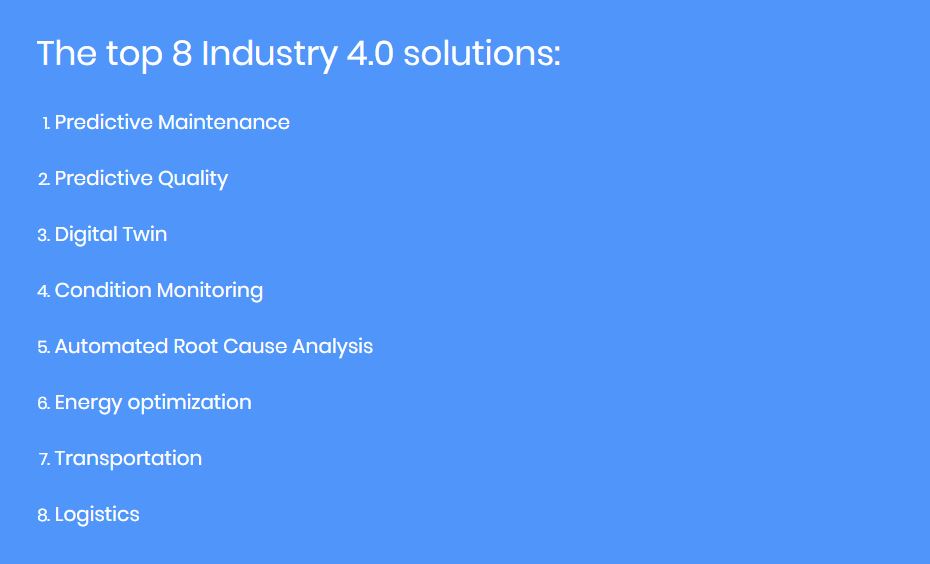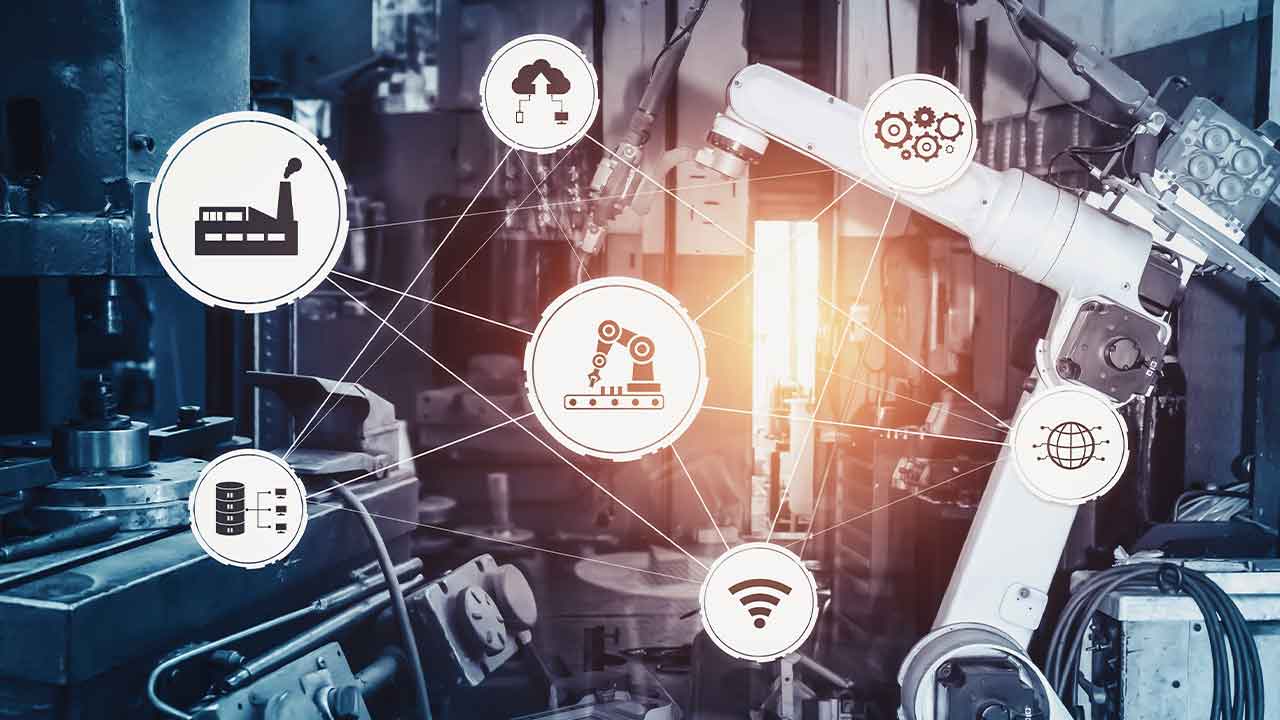Pick solutions, not platforms: How to choose an Industrial IoT platform
“If it ain’t broke, don’t fix it.”
That common phrase once defined manufacturing’s approach to optimization. But today, enterprises are painfully aware that smarter production lines and more efficient processes can save them millions in downtime and lost yield.
So, plant managers- people in what traditionally is one of the more conservative roles – are actively looking for better solutions, and they are often turning to an Internet of Things (IoT) platform.
But are they looking in the wrong places?
How do you know which IoT platform is best-suited to your needs? Don’t make this mistake!
Industrial IoT or Industry 4.0 touts itself as the best way to increase revenue and efficiency in the factory. And it’s not far from the truth. The problem, though, is that every IoT platform is different, and not necessarily suited to each company’s business needs.
Companies generally start testing the waters with one or two key IIoT solutions, but they don’t understand that some IoT platforms are built to address those exact solutions, and some won’t work at all.
So how do you know which IoT platform is best-suited to your needs?
In order to choose the right IoT platform to get started, there are a couple of things you need to know:
Different types of Industrial IoT platforms
Before choosing an IoT platform, you’ll have to define which type of platform fits your solutions.
There are over 450 IoT platforms today, and each one offers something slightly different. Broadly speaking, they fall under the categories of IoT development platforms or IoT runtime platforms. We’ve already covered the differences between the IoT platforms in this blog post.
Choosing the right type of Industrial IoT Platform depends on your internal resources. To create Industry 4.0 solutions, you’ll need to capture machinery data in a central repository to analyze that data, and visualize the resulting insights in an intuitive way.
Some companies already have sensors integrated into their assets and connectivity solutions that capture their machinery data, and are looking for a cloud analytics provider; others want end-to end service, but plan on using their own data scientists to translate the data into a solution.
If your goal is to implement asset monitoring or operational intelligence capabilities from scratch, it’s generally best to look for a platform that either provides end-to-end solutions, or is partnered with another platform that provides some of the services, such as an IoT cloud platform.
In fact, the best match between business needs and Industrial IoT platform is made by orienting your search in line with the solutions you’re looking for.
Get the manufacturer’s guide to navigating the Industrial IoT Platform landscape
Industrial IoT Platform Solutions
IoT Platforms tend to specialize in one or two solutions. Some of these solutions are comprehensive, and others are geared towards providing a single, targeted business benefit.
Before checking out an Industrial IoT platform’s features, you should define the primary solution or solutions you want to employ.
Top 8 Industry IoT solutions:
- Predictive Maintenance
- Predictive Quality
- Digital Twin
- Condition Monitoring
- Automated Root Cause Analysis
- Energy Optimization
- Trasportation
- Logistics

Doing a solution-targeted search helps you map out which capabilities to look for in the IoT platform and quickly narrows down the choices.
In fact, the solution capabilities are the prime consideration that should most inform your choice of the underlying Industrial IoT platform.
How to match the solutions you need to an Industrial IoT platform
Know thyself – and thy pain points
Examine your company’s main pain points. Identify where the drain in resources or revenue is.
You can pinpoint the right solution to launch as a test case by reviewing your overall equipment effectiveness (OEE) and choosing the aspect that can be improved on the most.
In a recent Seebo survey of process manufacturers, 62% of respondents said their main production failure root causes lay in the manufacturing processes; for another 25%, it was mechanical failures in motors and bearings of specific assets in the production line. Energy and supply chain pains took a distant third and fourth place.
Optimizing manufacturing process or preventing machine breakdown through better condition monitoring – or even preventative maintenance – require different technologies. There are platforms that are better suited for process manufacturing vs. discrete manufacturing, and vice versa. It’s clear, though, that not every Industrial IoT platform will suit every solution, so before you research platforms, verify within your company what needs to be worked on the most.
What type of services does the IoT platform offer?
Going back to the different types of platforms – any solution implementation involves sensors, connectivity, data acquisition, data analytics, and visualization. You may already have some of these capabilities in-house, but any Industrial IoT solution will require all of these, from sensors embedded in million-dollar machinery to an on-cloud or on-premise data repository with advanced analytics .
Many platforms bill themselves as IoT platforms, but their solutions differ drastically – make sure you are targeting the link in the chain that is relevant for your production line.
Similarly, pay attention to which step or steps in the production lifecycle the platform focuses on.
Some solutions relate to the production line, while others focus on addressing pain points in the supply chain. Knowing this, you can look for specific capabilities in an IoT platform that address the stage where your pain points lie.
Contextualized vs. raw data
For some production lines, particularly in discrete manufacturing, it’s enough to collect data from the machines in the process. In more complex process manufacturing processes, where the materials used are ingredients that change shape and form throughout the process, there is a tremendous variety of variables that can influence results. To understand yield and product quality, production results must be contextualized via data about the production environment. For process manufacturers, it’s crucial to contextualize data in the framework of the manufacturing environment and process. Look beyond the buzzwords, and understand if the IoT Platform which offers insights based on more than data from the production assets alone.
Security
Data security is always a serious concern. Manufacturing assets are less vulnerable to hacking than consumer devices, but captured data must be secured, and you’ll need stringent measures in place to protect who can access which data, from what location, and at what times.
More about IoT: Three Types of Security
Data integrations
Integration is multi-directional. In process manufacturing, you will not only need to capture the OT data from PLCs and data historians, you will need to contextualize it with data from MES, ERP, and quality management systems, to name a few.
Above all, you will want to ensure that the platform considers the production processes in its data schema, to accurately reflect your production processes, in addition to the assets.
How does the IoT platform manage its integrations? Will you need additional technical support to manage it?
In a solution-centric approach, you should ask yourself which integrations your solution will need. A platform that claims to to provide a production quality solution doesn’t have to include its own quality management software, but it should provide easy integration with at least the most common quality management tools.
Industrial IoT Solutions for whom?
Most AI solutions require a plant to have in-house data scientists. The insights produced will often be incomprehensible to the people who need the insights they provide the most: quality investigation teams, process engineers, and even operators on the factory floor. Evaluate whether your solutions are for production line staff or for data scientists, and choose an Industrial IoT platform relevant for those users.
Understand who the users of the system will be – and ensure the chosen IoT platform can serve them directly.
Check out the lists of industrial IoT companies and startups present at Web Summit 2021.
First, understand who the users of the system will be. Ensure that the chosen solution can serve these users directly. These teams must be able to access and understand the data that you are collecting or receiving, in order to act on them. Then, check that any platform you review is indeed accessible to these teams. If they require a data scientist, you’ll have to find a way to translate the findings to the relevant teams.
Alternatively, look for an IoT platform which doesn’t require that you hire data scientists, or which transmit actionable insights in a way that’s visually clear to the teams that need the results the most.
With these tips in mind, you should find it easier to define the solutions you want and create a checklist of what to look for in an Industrial IoT platform.
The Tradeoffs Between a Build-Your-Own and Pre-Built IIoT Platform
The Industrial Internet of Things (IIoT) is ushering in a new era of manufacturing—one that is centered around using data to create actionable insights that grow competitive advantage. As more advanced IIoT software and hardware continues to be developed, industrial leaders need to consider how best to position their organization to benefit from this innovation. Organizations can either build an IIoT platform or leverage a ready-made solution.
In this paper we will discuss the growing impact IIoT is having on the global manufacturing industry, including the advantages of adopting smart manufacturing and using digital twins across the complete lifecycle of product design, manufacturing and service. Subsequently, we investigate the challenges of building your own IIoT platform and explain how MindSphere on Azure IoT, Siemens’ cloud-based, open IoT platform on Microsoft Azure, directly addresses those challenges. We then provide industry examples to demonstrate the potential value an IIoT platform backed by Microsoft and Siemens offers industrial organizations.
Table of Contents:
- How IIoT is Reshaping Global Manufacturing
- Determining Whether to Make or to Buy Your IIoT Platform
- How You can Benefit from a Pre-Built Platform
- Microsoft Azure and MindSphere: A Partnership Built on IT and OT Leadership
- Automobile Manufacturer Optimizes Assembly Quality
- Pump and Valve Manufacturer Enacts New Business Model
- Choose a Future-Proof Platform Backed by Industrial and Cloud Expertise
This is an excerpt from the “Make vs. Buy – Understanding the Tradeoffs Between a Build-Your-Own and Pre-Built Industrial IoT Platform” white paper written by Microsoft and Siemens. This paper is part of a sponsored campaign by Siemens.
More resources on IIoT on our website here.
Originally this article was published here.
 This article was writtben by Zahava Dalin-Kaptzan. She is a Data-driven marketing professional with a focus on operations, content strategy, and driving conversion, a Strategist, problem-solver, creative thinker and operational whiz who can translate complex technology (IoT, Industrial IoT, AI and Machine Learning) into persuasive messaging and a team player who excels equally at collaboration and independent project management.
This article was writtben by Zahava Dalin-Kaptzan. She is a Data-driven marketing professional with a focus on operations, content strategy, and driving conversion, a Strategist, problem-solver, creative thinker and operational whiz who can translate complex technology (IoT, Industrial IoT, AI and Machine Learning) into persuasive messaging and a team player who excels equally at collaboration and independent project management.



